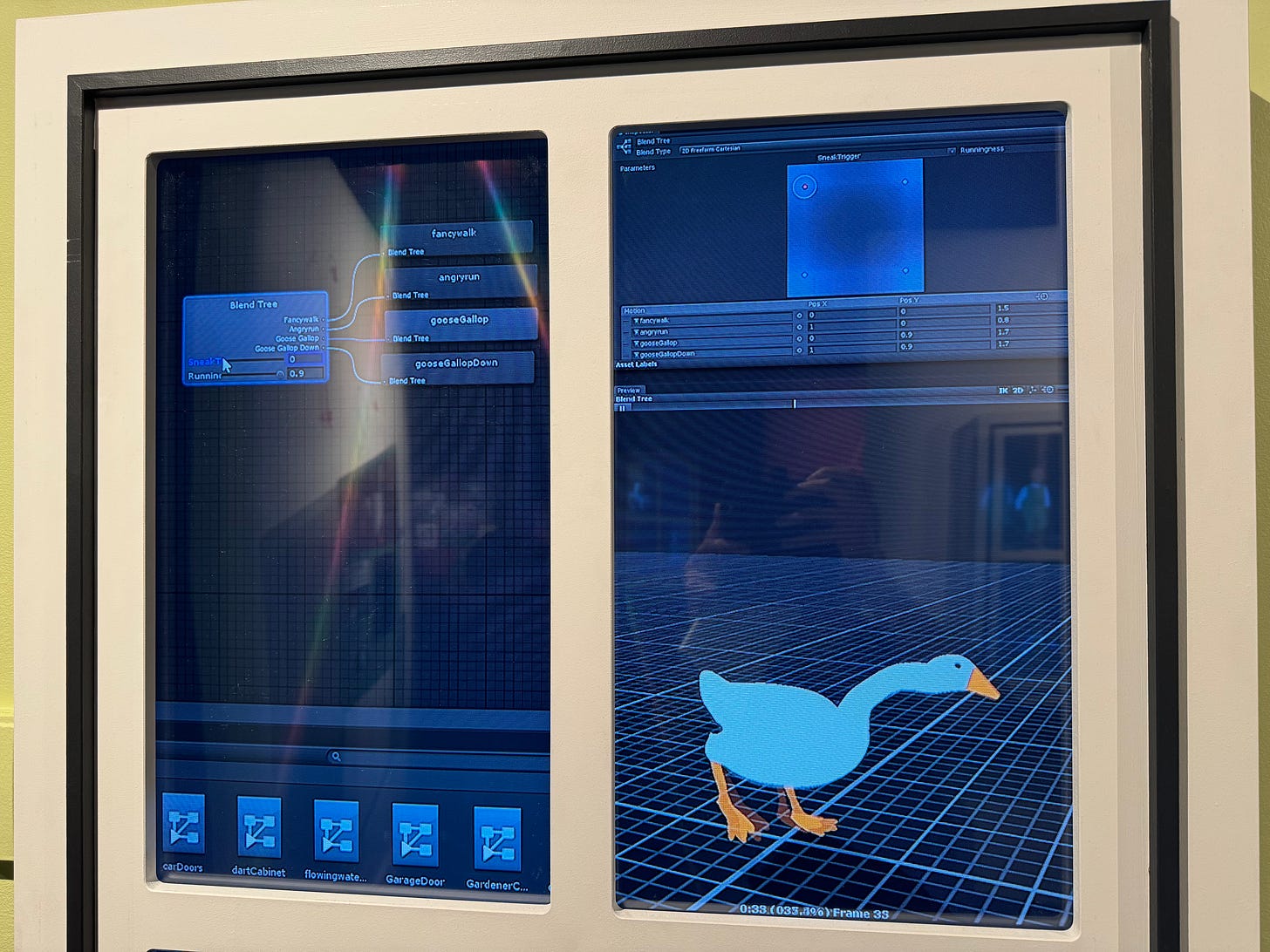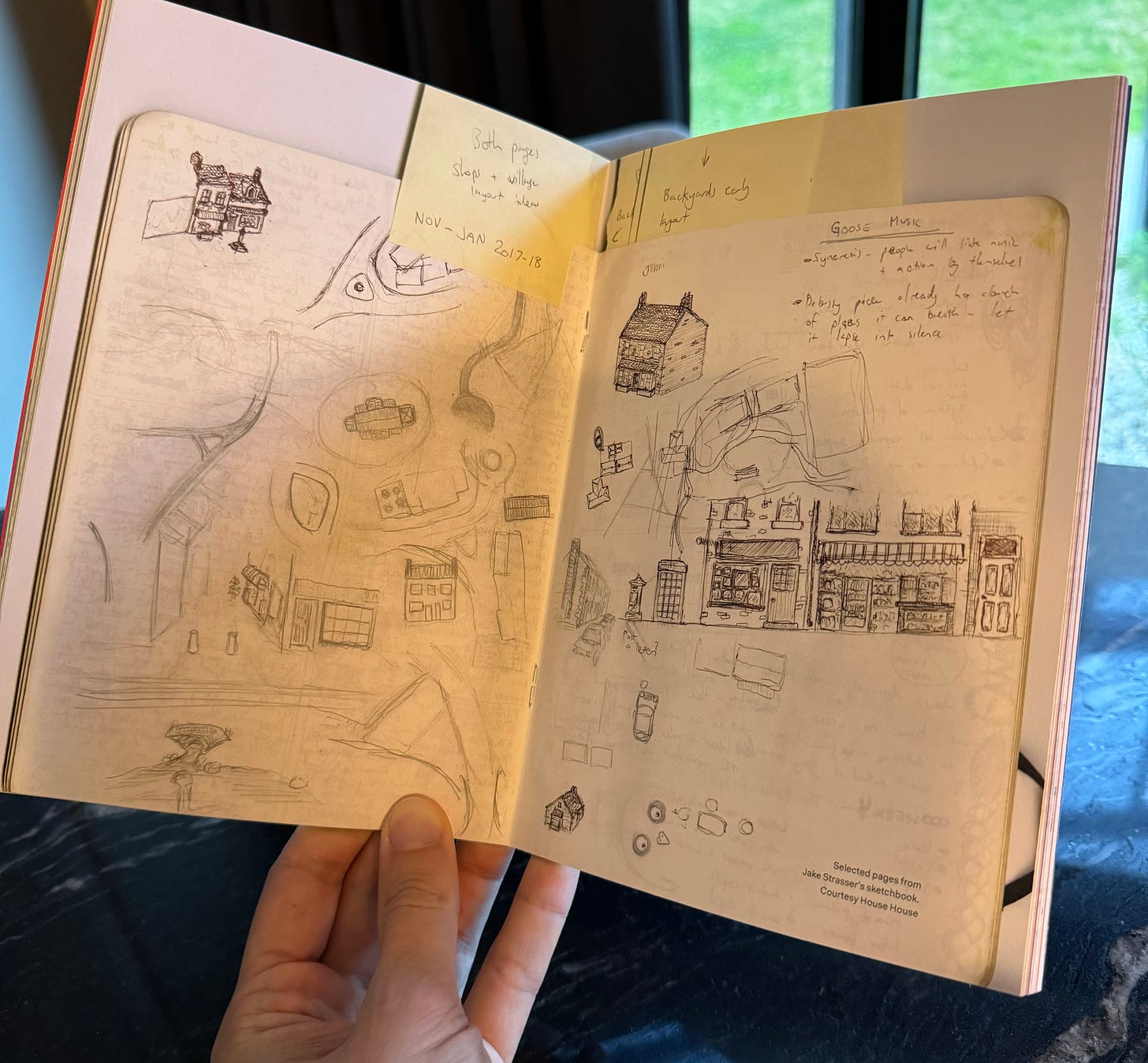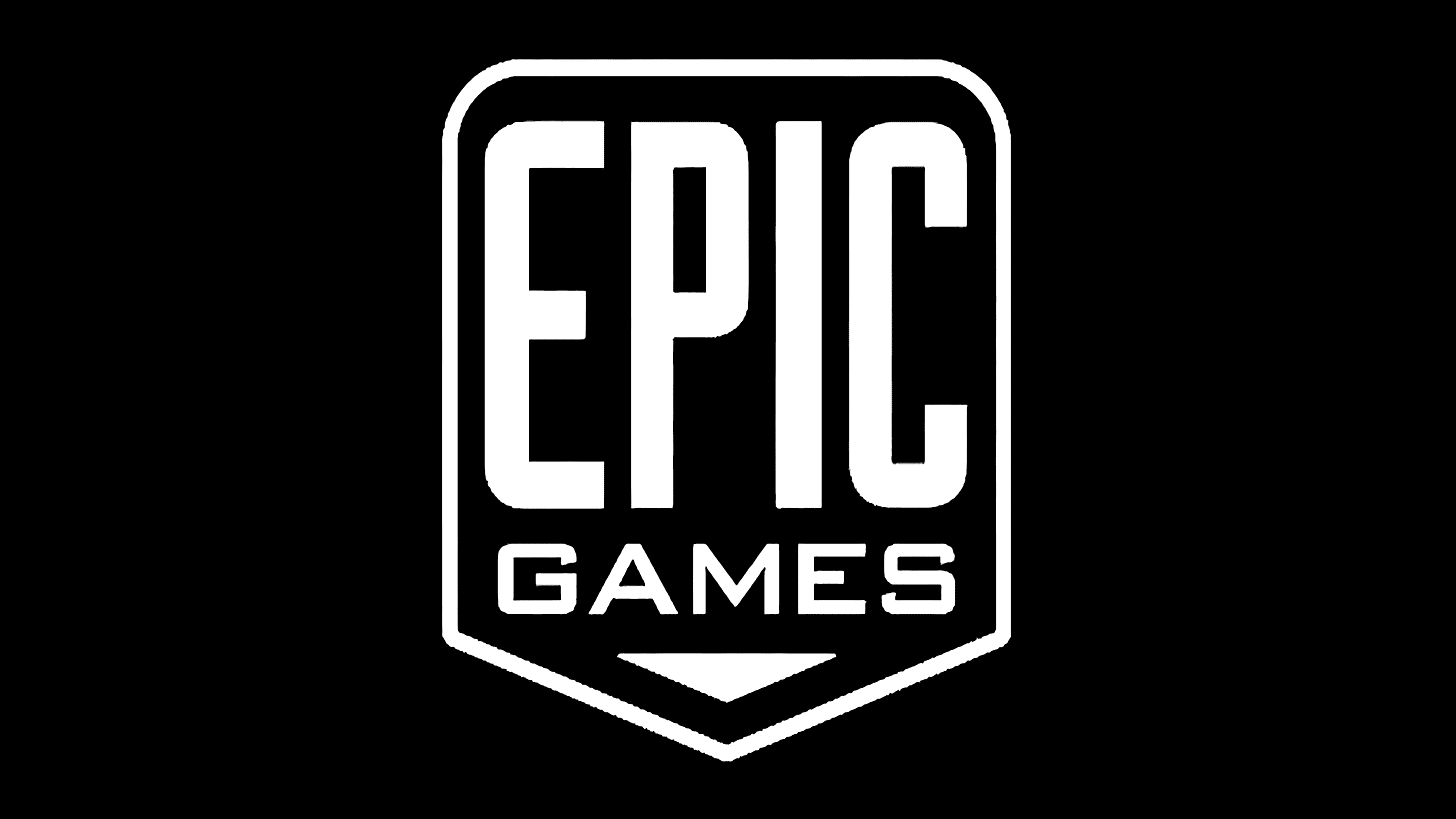Honk! Inside the Untitled Goose Game Exhibition 🪿, 03/10/2024
I head to ACMI’s avian exhibit for VGIM’s first birthday
Untitled Goose Game turns five with a unique exhibition in Melbourne
Epic Games goes toe-to-toe with Google and Samsung in latest legal squabble
NHL 25 skids onto the ice in this week’s releases
G’day and welcome to the first of a three part VGIM Down Under series,
I’m in Australia for most of October on a research trip for the ol’ book. So it felt like the perfect opportunity for me to write about the country’s burgeoning games scene while I’m here for the benefit of you lucky readers across the world.
As well as squawking about a certain museum exhibition in this week’s VGIM, the next two editions will give you the lowdown on what happened during Melbourne International Games Week and all the gossip from SXSW in Sydney.
But before we get into this week’s newsletter, I wanted to take a moment to celebrate a small milestone: Video Games Industry Memo celebrates its first birthday today 🎉🎉🎉
Since exiting soft launch 12 months ago, VGIM has accrued more than 3000 subscribers, been read over 150,000 times and been mentioned by the likes of BBC News, Sky News and The New York Times.
And I can honestly say that I did not expect this to happen. When I started the newsletter, my only real ambition was to keep it going as a way to sharpen my writing and stay across the stories shaping the games industry.
To be sitting here a year later with a growing community of free subscribers, a cadre of paid Insiders and a handful of business backers from across the games industry is truly humbling.
So I want to say a big thank you to all of you for reading, to everyone who has been kind enough to offer feedback on the newsletter and to anyone who has ponied up to support my work. It really is appreciated.
But before I end the birthday celebrations, I did want to remind you all that I will be hosting some celebratory drinks back in London next month.
The VGIM 1st Birthday Party, sponsored by Big Games Machine, is taking place on Thursday 14th November in Central London and is completely free to attend.
If you’d like to join me and a load of VGIM readers for an evening of drinks, birthday cake and industry chatter, make sure to get your free ticket here before they’re all gone.
Anyway, let’s park the self-congratulation for now and indulge in a different kind of celebratory honking instead.
A quick note: last week’s VGIM was sponsored by the lovely team at Arbuthnot Latham. However, the first link to their indie game advice hub didn’t work as expected due to Substack sticking in a sneaky tracking tag into a link.
Please take a moment to access the correct link here as a way to thank them for their support of the good ship VGIM.
The big read - Honk! Inside the Untitled Goose Game Exhibition 🪿
If someone had told me prior to 2019 that I’d one day enjoy a helping of goose served to strains of Debussy, I’d have assumed I was being taken to a bistro.
But since 2019, the combination of anatidae and classical composition will now always be associated with Untitled Goose Game - one of the landmark independent development hits of the past decade.
House House’s award winning game, which pitched itself with the memorable tagline “it's a lovely day in the village, and you are a horrible goose”, captivated millions of players across the world with its mix of slapstick stealth silliness and good-natured villager torturing.
To mark its fifth birthday, the Melbourne made game has become the subject of an exhibit at ACMI - Australia’s national museum of screen culture - called Honk! Untitled Goose Exhibition.
In it, visitors learn much more about what went into the making of the game including its influences, the documents used to shape the vision and details about the decisions the team - which included Stuart Gillespie-Cook, Nico Disseldorp, Michael McMaster, Jacob Strasser and composer Dan Golding - made during development.
And after I had taken a gander at the gallery, I left with a strong sense of both what made Untitled Goose Game such a well-defined breakout hit and the joyful messiness that underpins great video game development.
ACMI Inc
Before tucking into my serving of goose, I was fortunate to be given a guided tour of ACMI by Seb Chan, the museum’s CEO, to understand more about its mission.
Seb, who previously led the digital renewal of the Cooper Hewitt Smithsonian Design Museum in New York, explained that ACMI’s aim is to celebrate the humanity that underpins the creation of games, visual art, television and film as much as the history of each medium.
“Showing the people and the craft behind things matters”, Seb explained. “It’s not just showing that something is done; it’s showing how it’s done.”
How ACMI achieves this varies considerably both in terms of which medium it is representing and from exhibit to exhibit.
In some cases, the story is told simply. I was immediately transfixed, for example, by a drawing done by Team Cherry in the early days of development for Hollow Knight, which sketched out the world of Hallownest that millions of players - me included - would later spend hours diving into.
Other exhibits made their points interactively. A showcase demonstrating the meme potential of visual content, such as Larry David’s pronunciations that he is, indeed, ‘pretty good’, got its message across by allowing visitors to use moveable blocks to watch, learn the context behind and remix top memetic phrases for their own amusement.
And in one area dedicated to historic documentary footage, I was able to watch clips by projecting them onto the back of my hand - bringing the footage in or out of focus by moving my limb up and down as necessary.
ACMI’s drive for creating unusually engaging exhibits like this is partly about serving the classic impulse of any museum: effectively engaging its visitors.
Even though its collection contains an impressive catalogue of content, ranging from the 7000 video games it has in its archives through to the car from George Miller’s Mad Max, educating and informing a wide audience of kids, parents and video games writers sporting disastrously hefty jet lag demands an accessible approach.
By creating engaging interactive exhibits, ACMI is able to bring the audiences that step through its door with them on a journey to learn more about screen culture - helping it to successfully entice over a million visitors (and more than 100,000 school children) to the museum each year.
But another reason why ACMI needs to show an intuitive understanding of the appeal of screen culture is to cement its burgeoning reputation as a space where it is successfully made.
A couple of floors above the exhibition space, the museum is home to the ACMI X co-working space.
Here, game developers and creatives are able to use the space as a place to make games, to chat with ACMI’s team to inform their work (and vice versa) and engage in programmes supported by the museum - like quarterly play-testing with museum visitors - that can meaningfully push their project along.
The result is an unusually developed sense from the team running the museum of both what goes into the making of great screen content and the best way to communicate that to audiences of both creators and consumers.
ACMI’s programme, for example, supported the development of Untitled Goose Game directly through its museum play-testing days. And its accelerator programme boasts a number of genuine commercial successes to its name, including 2022’s breakout indie hit Cult of the Lamb.
By combining its mission to inform and educate with a wider effort to become a hub for the creative industries it supports, ACMI has demonstrated that telling the story of cultural content is easier when you understand, and appreciate, all of the elements driving its creation.
And it’s a major reason why its exhibition about the creation of Untitled Goose Game proved to be warmly revelatory.
Gone for Goose
The thing I particularly enjoyed about Honk! was its decision to focus on the breadth of influences House House brought to the creation of Untitled Goose Game, rather than leaning immediately into the design aspect first.
Rather than bombard people with game development or terminology that a lay audience may not understand, Honk! starts with the cultural influences behind the game and works back from there.
By rapidly illustrating the wide range of influences that went into House House’s game - including British pub culture, spaces inspired by Akira Kurosawa’s Yojimbo and the theatrical work of Buster Keaton - it takes just a matter of minutes to understand why Untitled Goose Game was able to bring something that felt both unique, yet oddly familiar, to market.
But while Honk! isn’t afraid to show the breadth of influences that guided House House’s work, it still ties those choices back to the team’s singular ambition: creating a slapstick comedy which empowers the player to deliver the punchline.
This was achieved partly by leaning into familiar tropes of the genre to nudge you gently towards certain actions.
In classic slapstick films, we all know that the bucket perched on top of a wobbly stepladder is smoking like a Chekov owned firearm. You know it will land on someone’s head at some point. It’s just a question of when it happens and how funny it is when it takes place.
Untitled Goose Game is designed with similarly knowing nudges and winks throughout the experience.
After setting you up as a horrible goose with a penchant for goading people, the game introduces you to an eminently bullyable Milhouse-esque child and puts them within striking distance of a claustrophobic phone box.
You know what needs to happen next. You’ve just got to decide how you do it.
But while House House leans into some of the trappings of the slapstick genre, it also willingly subverts, or plays with, tropes when it thinks it can get a laugh from it.
Take, for example, the decision to run with a plinky plonky piano soundtrack.
On paper, it seems like a deliberate effort to recreate the soundtracks that underpinned classic silent movies of the 1920s.
In reality, choosing to riff on Debusy’s ivory tickling preludes was done for a much simpler reason; that pairing the work of a French composer with the aggressive actions of the goose is, simply put, funny.
No need for grand allusions to silent comedy history here, then.
But underneath those literally noisier design choices, House House also made a range of quiet - but clever - tweaks to the game that amplified the sense that a psychotic goose was a vehicle for comedic chaos.
Choosing to set the game in a picture perfect British village was done to deliberately contrast uptight village life with the honking audacity of a goose on the loose.
Ensuring that the tempo of the piano soundtrack matched the player’s waddling pace - madly scrambling as you dash forward or slowing down as you tensely tip-toe towards causing your next bout of mayhem - accentuated your role as the clown in this particular circus.
Even the in-game objectives were rewritten to make it feel more like you were a present part of the comedy, substituting firm directions to act such as “Get into the TV Shop” into looser instructions to “Get on TV” - making every action feel like you’re guiding yourself towards landing a punchline.
Embracing messiness
But while Honk! cleverly illustrates the careful craft and authorship that went into making its comedic vision work, it does something else too: it unashamedly showed the mess that came before the wonderful final product emerged.
The exhibit featured a contrast between an early build of the area where you’re able to bully the aforementioned wiener kid and what emerged in the final game -illustrating a number of deliberate changes in approach to ensure the jokes landed as successfully as possible.
Towards the back of the exhibition it was possible to flip through a virtual version of the Moleskine design document drawn up for the game. This allows visitors to see the kinds of messy diagrams and scrawled handwriting that starts well before a game is made, showing the distance from great idea to practical execution.
Best of all, the exhibition featured a scrolling video of the game’s git commit - essentially a development log where creators upload the latest build of the game for everyone else to work on - to show the mix of rigour, chaos and gallows humour that sits at the heart of game development.
This included the entertaining double commit on Monday 20th March 2017, where one of the developers pushed an update which “added flap sounds” before updating it five minutes later with another note which simply read “flap sound more”.
There was even one update in which one of the team simply noted that “the game is broken” - presumably leaving everyone with an entertaining afternoon or two of ferocious bodging to get to the bottom of the issue.
But beyond finding many of these notes amusing, they’re important because they show the humanity behind the game’s development and behind game development more generally.
As the rolling log illustrates, the making of one of the most polished and carefully crafted comedic indie hits of all time was enabled by a development process that was, at times, necessarily messy.
Stuff didn’t work. Stuff wasn’t properly added to the game in a structured manner. And when stuff really didn’t work, the team indulged itself in some gallows humour before cracking on with fixing it.
By showing this in all of its entertaining detail, ACMI’s exhibit does what I really wished so much more of the industry would do and humanise the creation of games for a mass audience.
By drawing back the curtain to show the challenges House House faced in creating Untitled Goose Game, and demonstrating how their vision guided them towards choices, the exhibit turns the often technical (and sometimes impenetrable) practicalities of game development into something wholly relatable.
And by doing that, it doesn’t just tell the story of the making of a great game; it also provides a template for how the industry can demonstrate its creative craft effectively - allowing us to show the all important humanity that goes into the making of our greatest games.
News in brief
Legal battle royale: Epic’s ongoing scrap against the giants of mobile continues. The company is suing Google and Samsung in the Northern District of California for enabling blocking features that bars users from installing apps from alternative app stores by default. The move was sparked by Samsung’s decision in July 2024 to turn on a feature called Auto Blocker for all its users, whacking up barriers to installing games from alternative stores like Epic’s mobile games store in the process. Handy timing, eh?
Assuming direct controls: And in further Epic news, the company has boosted its parental controls to allow guardians to monitor and limit playtime in both Fortnite and Unreal Editor for Fortnite (UEFN) games on behalf of their kids. The move will allow carers to keep a closer look on how much their charges are playing and impose limits if they do overplay. It also strengthens the company’s self-regulatory shield, allowing it to show off to concerned regulators around the world that its controls pass muster.
Shadow of its former self: This may have happened last week just as I was clambering onto a plane - hence its non-inclusion in last Thursday’s VGIM - but I thought it was worth noting that Ubisoft has delayed Assassin Creed: Shadows to next year. Instead of hoovering up cash in November 2024 as originally planned, the game will instead hope to make it rain on Valentine’s Day in 2025 instead. Good luck with that…
Licence to sell: China is on course to record its busiest year of video game licence approvals since the turn of the decade, according to the South China Morning Post. 109 domestic games were granted a greenlight to sell in the market in September by the Chinese Government, taking overall approvals to 959 for the year - just shy of 2023’s previous high of 1076 approvals.
Ninten-do plan your trip?: If my piece about going to a museum didn’t give you enough of an appetite for content about video games in civic spaces, then I recommend reading Katharine Castle’s write up of her trip to Nintendo’s new museum a short jaunt from Kyoto. Dive in for a critical analysis of whether the museum’s joyful exhibits do enough to get you under the surface of a famously secretive company and for the tantalising mention of an officially sanctioned Nintendo Love Tester machine. Phwoar.
Moving on
Laura Skelly has been promoted to Senior Communications Lead EMEA for Xbox…Steve Merrett has also had his job title tweaked, becoming the Communications and Marketing Director over at Bethesda…Charlotte Willis rounds off the PR promotions, becoming PR Account Director at Diva Agency…In non-PR news, Mario Garcia Arevalo is the new art director for Voodoo…And Jonny Taylor is now Client Partner over at Keywords Studios…
Jobs ahoy
Rockstar is advertising for one of the best ever jobs in video games comms, with one lucky person set to become its Director of Territory Communications in time for GTA VI…Try your hand as TikTok’s new Global Gaming Marketing Lead (though do watch out for the corporate buzz speak, judging by what’s written in the job ad)…Step up to the plate for Major League Baseball as its Marketing Manager, Games and VR over in New York...If you fancy coming to Melbourne, PlaySide Studios has space for a Senior Community and Social Manager…And Dinosaur Polo Club is hiring a Head of Technology to work out of its office in Wellington, New Zealand…
Events and conferences
Game Connect Asia Pacific, Melbourne -7th-9th October
SXSW Sydney, erm…Sydney - 14th-20th October
AI and Games Conference, London - 8th November (SOLD OUT)
PG Connects, Jordan - 9th-10th November
G-Star 2024, Busan - 13th-17th November
Games of the week
NHL 25 - The last of EA’s major annual sporting franchises slides its way onto all platforms.
Until Dawn - Remaster of classic slasher game launches nicely in time for Halloween playthroughs.
Starfield: Shattered Space - First DLC for Bethesda’s space opera touches down to the delight of all the sickos (read: me) who actually played the base game last year.
Before you go…
Do you like books? Do you like to read what writers think about other people’s books? And have you grown to tolerate me?
If you’ve answered yes to at least one of those questions, then get signed up to Shelfies; the weekly newsletter where pensmiths explain what the books on their shelves mean to them.
In tomorrow’s edition, curated as always by Lavie Tidhar and Jared Shurin, I explore books on one of my shelves - including the non-fiction title which has guided my approach to business and the novel given to me by an ex-girlfriend just three weeks before she dumped me (oh boo-hoo George).
Make sure to subscribe to Shelfies to read my piece, and all the other great articles landing in the series in the weeks and months ahead, by subscribing here.








